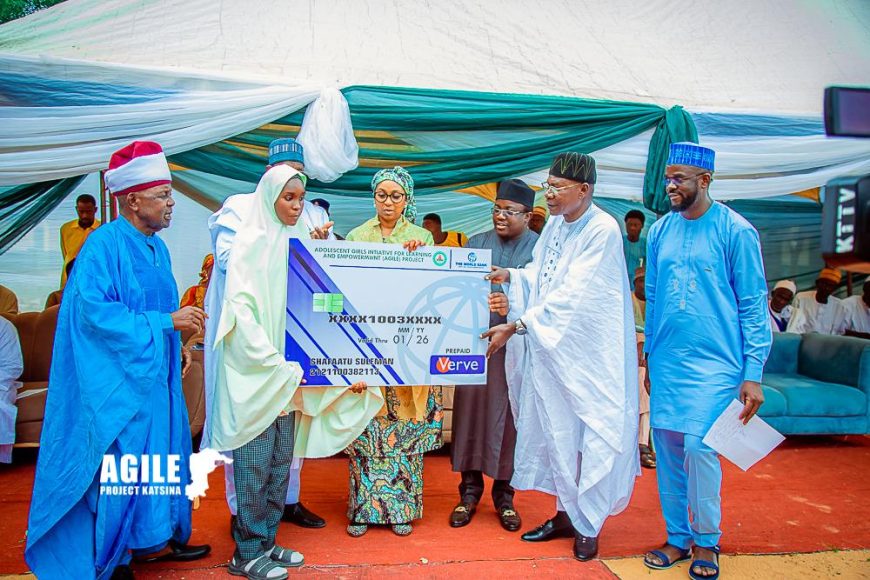Providing financial incentives to the poorest households
The objective of this sub-component is to address demand side financial barriers to girls’ entry to and completion of secondary school. To reduce direct and indirect costs related to girls’ enrolment, attendance and completion, the proposed subcomponent will provide support to alleviate the financial burden households face in sending their girls to school through a GSP. The subcomponent will financially incentivize girls’ transition to JSS and SSS and their attendance and completion of secondary school.
The incentive will include an initial amount of NGN 5000 (US$14) which will be provided upon a girl’s registration in the program at the end of primary school (P6) or at the end of JSS. The second tranche of NGN 10,000 to NGN 15000 (US$42) will be provided on successful transition to the next grade (that is, JSS1 or SSS1), respectively. The remaining two tranches of NGN 5000 will be provided at the end of each school term to incentivize retention upon verification of fulfilment of scholarship conditions. Priority for accessing the financial incentive will be given to eligible poor and vulnerable households captured in the National Social Registry (NSR), (established by the NASSP). In addition, other households in the same LGAs not captured in the NSR but residing in wards and communities with a high level of poverty and other forms of vulnerability including a low level of school transition rate for girls will be supported. To address risks related to social conflicts over the perceived unfairness of who is eligible to participate in the GSP, extensive stakeholder engagement with parents/guardians and communities will be undertaken to clearly communicate criteria for the GSP.
This intervention will be implemented in targeted LGAs in the states, initially focusing on LGAs included in the NSR. Within these LGAs, girls enrolled in primary schools that are within 6 km of a JSS and girls enrolled in JSSs will be eligible to participate in the program. Girls in primary 6 (P6) and JSS 3 (JSS3) will be registered to be eligible for the scholarship. Girls who have dropped out but re-enrolled, will also be eligible. Those from poor and vulnerable households registered through the NSR will be targeted as a priority. Further, wards and communities that have high levels of poverty and vulnerability will also be targeted. Four cohorts of 105,000 girls transitioning from P6 to JSS1 (a total of 420,000 girls) will be targeted effectively doubling the junior secondary enrolment in these LGAs. Further, three cohorts of 45,000 girls transitioning from JSS3 to SSS1 (a total of 135,000 girls) will also be targeted. The unit cost per girl ranges from US$70 to US$196 depending on the number of years the girl stays in the program during the project years.


Implementation arrangements: The Department of Scholarships within the SME and other relevant departments will be responsible for managing the program supported by the SPIU. Activities will include the registration of eligible girls, verification of achievement of conditions, and authorizing transfers (through financial service providers [FSPs]) to mothers of beneficiary girls or their caregiver. During the targeting and implementation process, the SPIU will work closely with the relevant departments and partners on the NASSP in the states and LGAs. The scholarship program guidelines will be developed and will include all relevant program details (for example, targeting process at the household level, minimum requirements girls must meet to be eligible related to school attendance and performance, and so on to be tracked by the school65 as well as the payment processes, monitoring, and reporting).

